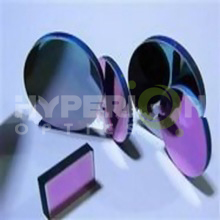Because achromatic lenses focus colors at the same point, they allow users to fully focus the image. Compared with uncorrected singlet lenses, achromatic lenses can produce clearer images, making it easier to observe and get more accurate perception.
When the achromatic lens was first introduced, it brought revolutionary changes to the imaging method. Although the quality of lenses has been continuously improving, achromatic lenses are still the main application in scientific and non-scientific optical applications. Some of the advantages of achromatic combination of lenses include:
1. Improved image quality: The achromatic lens eliminates the color band and greatly improves the brightness and clarity of the image. This fact is especially true for multicolor imaging.
2. Efficient light transmission: Unlike singlet lenses, the coaxial performance of achromatic lenses will not decrease as the aperture size increases, allowing you to use the entire transparent aperture.
3. Cost-effective production: Although achromatic lenses can be improved, these lenses are much more expensive. For most purposes, an achromatic lens can provide a large amount of correction, making it the most cost-effective way to obtain clear white light images.
In order to produce the desired color correction effect, achromatic lens manufacturers must use two or more types of optical glass, which have different amounts of wave dispersion. Generally, the process involves concave lens elements with high dispersion and convex lens elements with low dispersion. Two lenses are installed so that the deformation of one lens closely offsets the deformation of the other lens. This kind of achromatic lens is called an achromatic doublet lens and is the most common achromatic lens, although there are also triplet lenses.

 Call us on:
Call us on:  Email us:
Email us:  R&D Center: 9B-4F 401,No.1 Qingnian Road Liando U Valley,Yuhua International Wisdom Valley, Nanjing, 210039 China
R&D Center: 9B-4F 401,No.1 Qingnian Road Liando U Valley,Yuhua International Wisdom Valley, Nanjing, 210039 China









 English
English  cn
cn  de
de  es
es  fr
fr 


